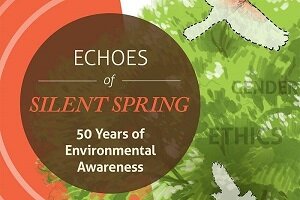
College & University Partners
Since its creation in 1998, the Task Force has received invaluable free technical assistance and support from a group of institutions of higher education. We also have received much news coverage from the Public Television and Public Radio system run by Central Michigan University.
Alma College
The four-year liberal arts college in Alma, about four miles from the Velsicol Superfund sites in St. Louis. College students and faculty have volunteered for many years both before and after creation of the Task Force and have worked with the PBB Registry. The college and the Task Force shared the Carter Partnership Award for their model of collaboration:
The 2008 Jimmy & Rosalynn Carter Partnership Award shared by the Task Force and Alma College
Several faculty and students have served in formal roles with the Task Force, including Melissa Strait, Murray Borrello and Amanda Harwood and have produced published reports and books on the environmental and human health problems resulting from the regions contamination. Ed Lorenz, an emeritus professor, is Vice-Chair of the Task Force. The Alma College Library Archives has copies of many files related to contamination of the watershed and the work of the Task Force.
Central Michigan University
Central Michigan University has had a number of faculty and students who have worked on projects related to contamination in the watershed and the human health consequences of contamination from Velsicol. A faculty member, Brittany Fremion, and a recent graduate of CMU, Nikki Braybaw, serve on the Executive Committee of the Task Force. Professor Fremion has directed the Michigan PBB Oral History Project, interviewing many people involved in the PBB Registry. Many records related to the Task Force and the PBB accident are housed at the Clarke Historical Library at the university.
The library at Central Michigan University which includes the Clarke Historical Library
WCMU Public Media
WCMU Public Media is the regional affiliate of the Public Broadcasting System and National Public Radio. It is a service of Central Michigan University in Mt. Pleasant, Michigan. It has frequently covered news of both the environmental and human health concerns related to Velsicol and the work of the Task Force.
Emory University Rollins School of Public Health
Emory University’s Rollins School of Public Health has for many years provided technical assistance to the Michigan Department of Community Health (now Michigan Department of Health and Human Services) in maintaining the PBB Registry of people exposed in the 1970s. Since 2011 Emory University has assumed primary management of the registry.
Emory University Team in “cold” St. Louis
In partnership with the Task Force and a group of farm families exposed to PBB (the PBB Citizens Advisory Board) have jointly formed an advisory committee to Emory on PBB issues.
There is a collection of health studies at the PBB Registry’s website on the Emory University, Rollins school of Public Health system. To access these reports, go to: Research (emory.edu)
Michigan State University
Michigan State University, as the state’s land-grant university, has been engaged with the environmental and human health issues in the watershed long-before the PBB accident through current remediation research, especially impacts of residual contamination upon wildlife and what those impacts indicate about the need for further clean-up. Ornithologist George Wallace in the 1950s and 1960s warned of the problems of DDT use. MSU faculty have also provided initial support for efforts to secure major funding for health assessments of the consequences of the region’s contamination and also research on the economic impacts of the pollution in the watershed and what they reveal about the larger issues of economic sustainability. MSU Press also has published books on the region’s contamination. Reflecting the long-term engagement with DDT (produced by Velsicol) and Rachel Carson, MSU hosted with Alma College the 50th Anniversary celebration of Silent Spring in 2012.
Exhibit on 50th Anniversary of Silent Spring, from MSU Museum
University of Michigan
University of Michigan faculty have been pioneers in assessing the environmental-health challenges from Michigan Chemical. In 1935, the year the company opened, U of M natural resource scientists responded to a state request and completed an early study of fish kills in the Pine River. Dr. Tom Corbett did the pioneering analysis of the toxicity of PBB and its presence in farm products after the PBB accident. U of M health scientists also did the pioneering research on the “Breckenridge cancer cluster.” More recently, scientists at the U of M School of Public Health have worked to expose lessons of the PBB accident for other exposures to persistent pollutants, including PFAS.
Flyer for conference February 2020 at University of Michigan




